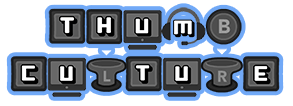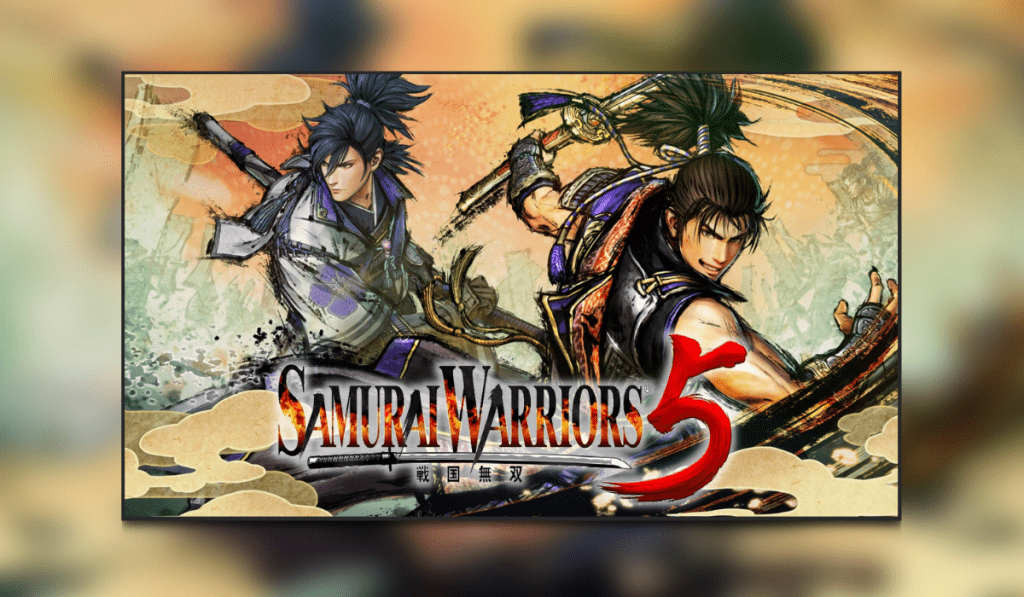
As you may have expected, Samurai Warriors 5 or Sengoku Musou 5 as it is known in Japan is the fifth main installment in the Samurai Warriors series. Samurai Warriors started life in 2004 and itself is the sister series of Dynasty Warriors. Dynasty Warriors is a spin-off from the 1985 turn-based strategy series called Romance of the Three Kingdoms. Confused? Basically, Koei Tecmo has been doing this for over 35 years so it’s fair to say they know what they’re doing.
Samurai Warriors 5 – A Cut Above The Rest – “It appears you have bested me, well, if you excuse me I will now retreat.”
Samurai Warriors 5 is a hack-and-slash game set in the Sengoku (Warring States) period in Japanese history and features characterisations of real people and real events. With 37 playable characters, the game’s focus is on Nobonaga Oda and his general Mitsuhide Akechi and the events leading up to the Honnō-ji Incident. Nobunaga, otherwise known as Owari’s Great Fool, or the Demon Daimyō is known as one of the Great Unifiers of Japan. Mitsuhide, as well as being a general in the Oda clan was the retainer for the Saitō family and top assassin under Nobunaga’s command.
Samurai Warriors 5 is again developed by Omega Force and published by Koei Tecmo and it’s a re-imagining of the series. The game will release on 27th July 2021 on PlayStation 4, Xbox One, Xbox Series X|S, Switch, and Steam. If this game does tickle your fancy, there is a demo version available. Now, after 7.7 million units sold since 2004, let’s see why this is the top-selling Sengoku series in Japan.
As always, let us know if you’re excited about this in the comments or if you’ve played any of the previous games. You can also check a review of Dynasty Warriors 9 here.
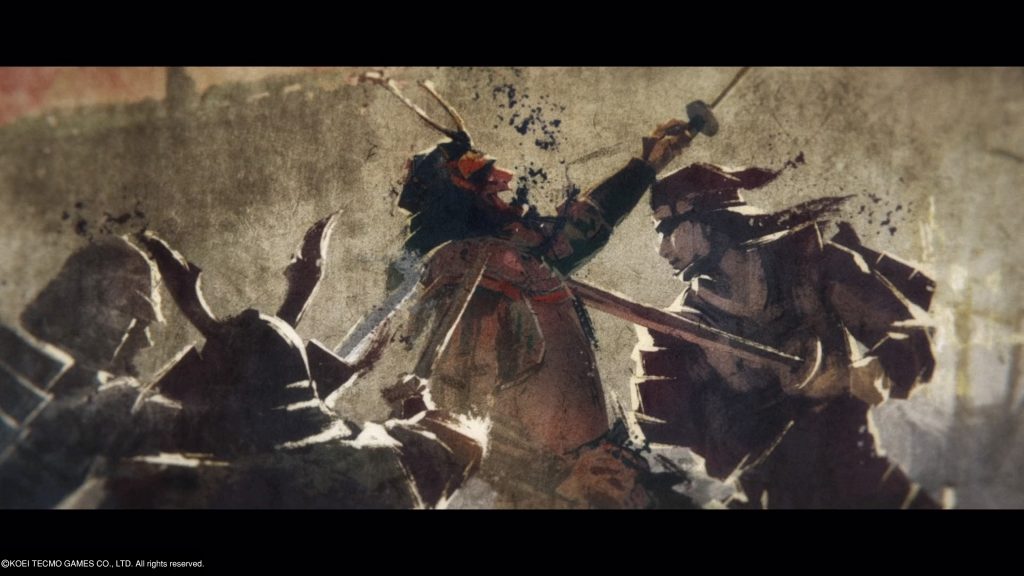
Gameplay
Samurai Warriors 5 Musou Mode is a game of chapters that are built of several stages on a particular character’s path. You have 60 minutes to complete each stage and each stage will have several objectives. These objectives will range from taking out commanders and other officers, to gaining control of territories and raising your clan morale as well as escorting your own to retreat. This is just a morsel of the types of objectives this beast of a game has to offer. Objectives can also change mid-battle as you would expect in real life.
As we start on Nobunaga’s Path, the first stage acts as a combat tutorial of sorts. Your ultimate goal here is to rescue Ieyasu who is being held captive by the Imagawa clan. With a fodder of thousands of enemies, this is the perfect time to practice your combos as you slaughter your way through the hordes. You will have your jump, block, normal attack, power attack, and the Musou attack which is a powerful area attack you can execute once your Musou gauge is filled. Additionally, you also have the all-new hyper attack which is a good way to start fighting. Essentially you will rush your enemies and just unleash hell on them with combos on your weapon of choice. You’ll also be shown how to call your horse into battle. More useful for traversal than combat if I’m honest.
If you’re a fan of the series then you know what to expect. Honestly, mowing down hundreds and thousands of enemies like this is one of the most satisfying combat experiences I’ve had. There is something insatiable about effortlessly pulling off a 2000-hit combo! The video below is captured on the PlayStation 4 and it speaks for itself. Here we play Turmoil on Mt. Inaba as we try to subjugate the Saitō clan and take Inabayama Castle.
As you progress onto the following stages, more will open up to you including the Ultimate Skill. This is a powerful ability for you to use on the battlefield. You can assign up to four on each character. The four new ones are Pulse, Recuperation, Avalanche, and Relentless Storm. The cooldown rate on these Ultimate Skills is fairly decent and is a great addition to give you a strategic advantage. The offensive Ultimate Skills are truly a joy to watch, especially as you can combine some with normal combos. Having the ability to switch characters in battle is fantastic as you are able to switch strategies and even instruct your other character on what to do.
Once you reach stage 4 in chapter one you can go back over others in free play mode and try and improve your rank and use different characters. You also have the option to have a second player to control that other character. This can be done locally or online. This is not something I was able to try while reviewing the game, but I am looking forward to trying it when the game releases.
Character progression is measured by your performance on the battlefield as you gain EXP. You will find gold and weapons on the battlefield. Weapons along with their passive abilities also level up the more you use them. At the end of each stage, you will be presented with a battle report to see how well, or badly you have done.
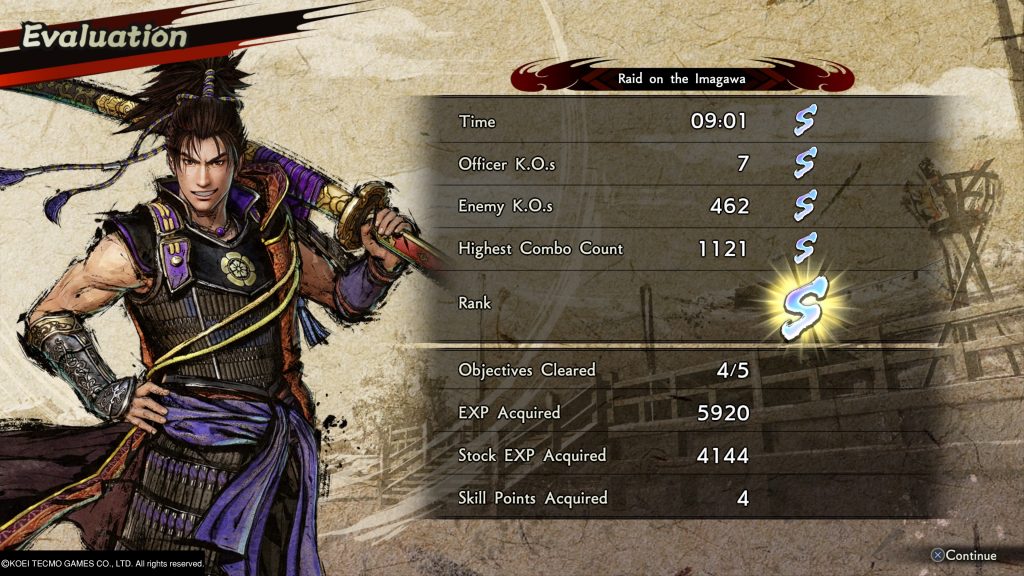
After each scenario, you will then be taken to ‘My Castle’. This is your hub area where you will manage all manner of things. It’s a good idea to spend a good amount of time here between each battle. The Dojo is where you will be developing your characters throughout the game. Each character has its own skill board where you can apply upgrades such as health, defence, and so on. A particularly nice touch is that each skill board has the character’s family crest in the centre. You can also increase your Weapon Mastery here which will help you gain access to new Ultimate Skills.
Moving on to the Blacksmith. Here you will be crafting and upgrading weapons. This is done with gold, and spending skill gems will imbue these weapons with passive abilities such as, but not limited to extra strength or adding a percentile chance of an elemental attack.
The Shop is self-explanatory. Here you will buy weapons, skill gems, and items you can use on the battlefield by equipping them in your quick use slot. Then there are the Stables. This is where your horses can be upgraded through experience and skills they are taught by other horses. All of these buildings themselves are also upgradable.
Once Chapter One is complete, you will then have access to Citadel Mode and The Vault. Citadel Mode is a sub-mode away from Musou Mode that is essentially a tower defence game. Here you will be collecting resources to upgrade your buildings. You will be summoning troops to protect certain areas and their friendship levels increase.
The Vault is exactly what it says it is. Here you can see your game stats including how many families you made fatherless by murdering them. It also gives you biographies of the real people characterised, as well as scenes and music from the game.
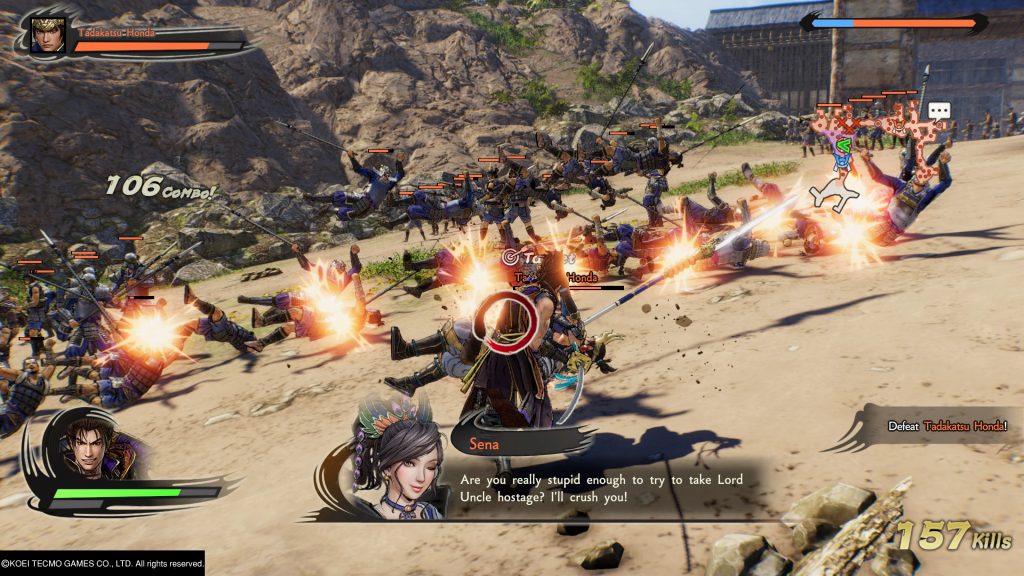
This is all sounds quite complicated, but once you get into it it really isn’t. Preparation for the battle is as important as the battle itself. You know what poor preparation leads to! Samurai Warriors 5 has opened up my eyes to a new type of game which is making me want to go and check out others in the series. The reasons for this are two-fold.
Firstly, the narrative. The depth that goes into making it engaging and at some points, quite amusing is phenomenal. The effort to make it historically accurate with a few embellishments here and there is some of the best I have seen in a game. There are tales of loss, betrayal, and heroism which can be so dramatic that you would believe it is just a story, not based on actual events.
Secondly is combat. I’ve been playing hack-and-slash games since my mum had her perm in the ’80s, but not on this scale of chaos. But it isn’t disjointed at all. Yes, there are bodies flying left, right, and centre but you are always able to control the crowd with a few swipes of your Ōdachi Rift Blade.
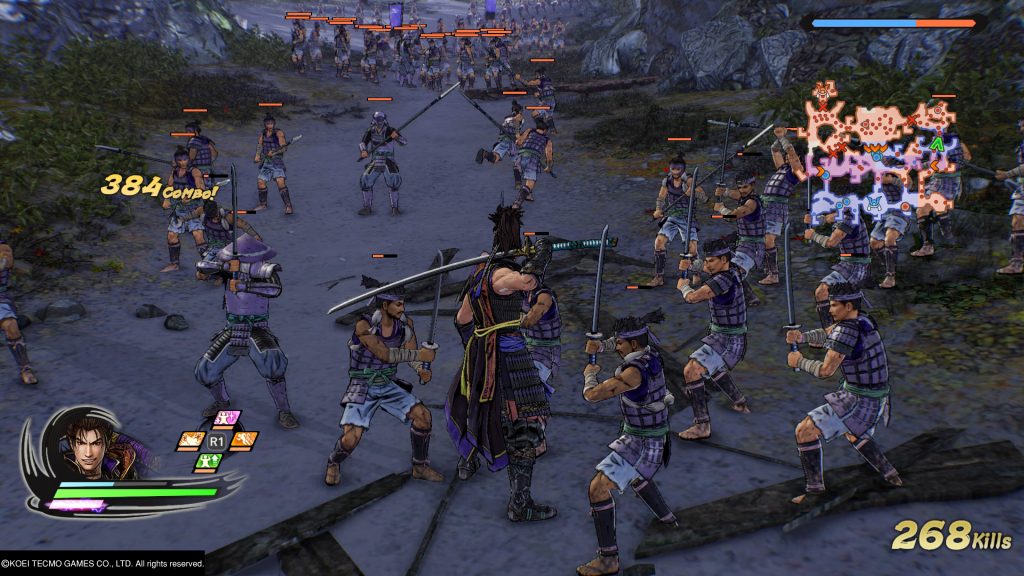
That being said there are a couple of minor criticisms. The first one is more of a personal preference than a limitation. There isn’t any blood at all. If I’m slaying by the thousands I want to paint the ground crimson, stain the sky red, and have it rain with blood.
The other is a bit of a technical one. Invisible walls, but only to you, the player. I was casually murdering a group of enemies and an officer when I hit them out of bounds. There is no reason I could not attack except for the invisible wall. This can upset your combat flow and as a result, reduce your combo count to zero. Luckily there was another group of people waiting to be murdered so I could keep my combo up while I waited for the other group to stumble wearily towards me and their doom.
Considering the amount of fast-paced action on screen, I experienced no screen tearing or drops in frame rate on the PlayStation 4.
Graphics & Audio
Samurai Warriors 5 is mind-numbingly pretty in its graphical redesign. Everything is in the Japanese ink-painting art style which is like Sumi-e monochrome style but in colour. Two other good examples of games that use this style are Ōkami and Street Fighter IV. It works so well here and I hope to see more of it in other Warriors titles.
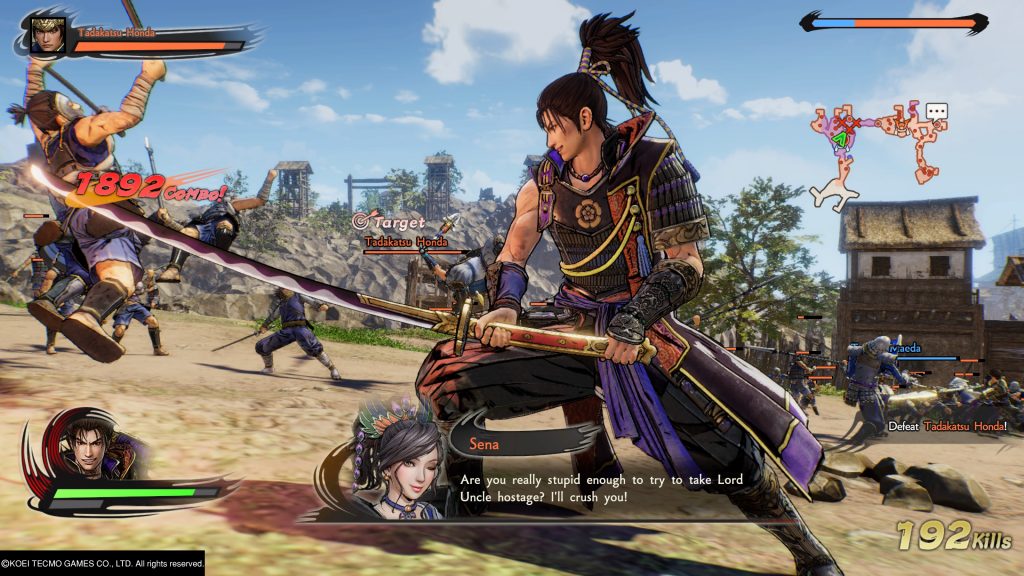
Musical composition falls to Shin-ichiro Nakamura, Daichi Sugaya, Ayako Toyoda, Ippo Igarashi, and Tomomi Fujiyoshi. Quite the quintet with other works including the Attack on Titan and Atelier Ryza series’. What they have created is a fusion of rock and orchestral music, a splash of electronica, and made it all work with traditional Japanese music. As a result, we have a score that’s filled with excitement, yet unafraid to address the melancholy of sorrowful melodies.
The dialogue is great to listen to and quite fun at times as it is all in Japanese. Though when it happens in battle, you rarely know what is being said as you’re focusing so much on fighting and missing the subtitles. Hearing the sound of metal on metal as your sword cuts through the air to meet its target is always good too. It’s just a shame you can’t hear the screams of the fallen as they seem silent while you slice and dice them like a sushi chef. This is just a minor discrepancy and the soundtrack more than makes up for it.
Longevity
From start to finish, Musou Mode will take about 20-25 hours depending on skill. Of course, the game doesn’t have to end there. You can always go back and improve your rankings or play again with a friend. Or simply play the game with different characters. Don’t forget about Citadel Mode as well, there is plenty of fun to be had there. Also, the Warriors games are notoriously long if you’re a Platinum Trophy hunter so there is that. I am one, and I highly doubt I will be attempting this. I don’t have a spare 80+ hours, which is just an estimate based on previous games.
There are DLCs planned as well which will come in two waves. Each wave will add three more scenarios as well as a new BGM for each. Also, there will be three additional horses in each wave as well as weapon sets. Plenty to keep you going.
Final Thoughts
This is the first Warriors game I’ve played, and I was pleasantly surprised. I’d seen them before and didn’t really think much of them. But now I am a bit older, wiser, more of a cultured gamer. The story is what drew me in the most and the fact that it’s based on actual events of the Sengoku period. Who said games weren’t educational? The combat coupled with a stellar soundtrack is sensational that never really lets up unless you’ve sent everyone in that area to meet their maker. I love this game!
Yes, there are those minor nuances I mentioned earlier, but it isn’t enough to force the game to commit seppuku over. If one game can leave a big enough impression for me to want to check out all the other games, it deserves a Thumb Culture Platinum Award.

Disclaimer: A code was received in order to write this review.
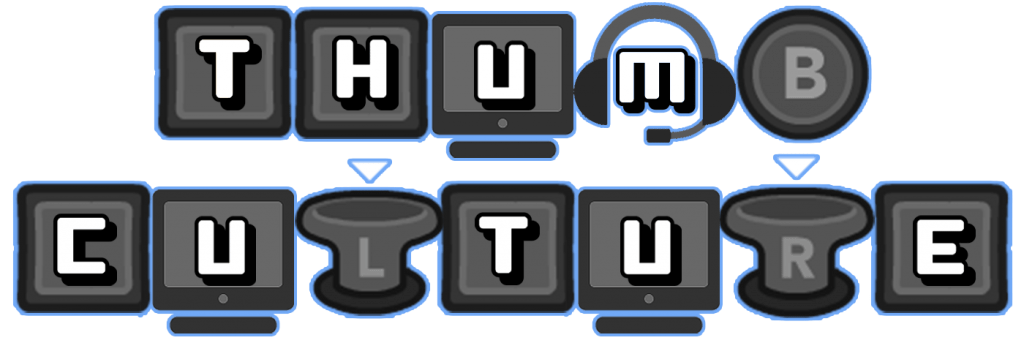
YouTube | Facebook | Twitter | Instagram | Discord | Podcast
